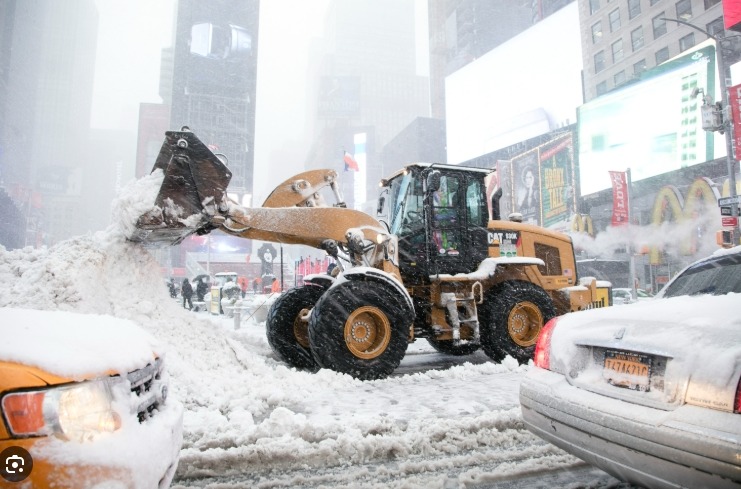As temperatures drop and winter storms loom, New York City commercial property managers face the yearly challenge of preparing buildings for harsh, unpredictable weather. Winterization isn’t just a best practice—it’s essential for protecting assets, ensuring tenant safety, and avoiding costly emergency repairs. Below is a comprehensive winterization checklist tailored specifically to NYC commercial properties, where aging infrastructure, dense urban logistics, and extreme temperature fluctuations make preparation key to smooth operations.
1. Inspect and Service the Heating System
Heating failures in the middle of a cold spell can lead to major tenant complaints, frozen pipes, and even business interruptions. Before winter hits:
- Schedule a full inspection of boilers, furnaces, and heat pumps.
- Conduct combustion efficiency testing.
- Verify thermostats and sensors are working properly.
- Clean ducts, replace filters, and check fuel levels for oil-based systems.
- Ensure backup generators tied to heating or life-safety systems are operational and load-tested.
Proactive maintenance reduces the risk of mid-season breakdowns and helps maintain energy efficiency through the winter months.
2. Protect Plumbing and Prevent Frozen Pipes
Frozen pipes are among the most expensive winter emergencies. To minimize risk:
- Insulate exposed pipes in basements, mechanical rooms, rooftops, and exterior walls.
- Confirm that heat is evenly distributed in areas prone to cold spots.
- Seal gaps where cold air can enter, especially around loading docks and utility penetrations.
- Inspect sprinkler systems and fire suppression equipment for freeze protection.
- For vacant or low-occupancy spaces, maintain minimum interior temperatures or install temperature monitors for early alerts.
Even a temporary power outage can cause pipes to freeze quickly, so planning ahead is essential.
3. Seal the Building Envelope
NYC’s winter winds can exploit even the smallest vulnerabilities in a building’s exterior. Strengthening your building envelope will keep tenants comfortable and reduce heating costs:
- Inspect windows and doors for drafts and replace damaged weatherstripping.
- Check for cracks in exterior walls, masonry joints, and roof parapets.
- Examine older window frames for gaps or rotting wood.
- Consider thermal imaging to identify heat loss areas.
- Ensure vestibules and revolving doors are functioning properly to limit cold-air intrusion.
A well-sealed building reduces the strain on HVAC systems and improves overall energy performance.
4. Prepare the Roof and Drainage Systems
Snow accumulation and freeze-thaw cycles can wreak havoc on NYC roofs if they aren’t properly maintained.
- Clear gutters, scuppers, and roof drains of leaves and debris.
- Inspect membranes for punctures, loose flashing, or pooling water.
- Remove unnecessary rooftop equipment or debris that could obstruct drainage.
- Schedule a snow-removal plan with vendors that understand your roof load capacity.
A clogged or damaged roof drainage system can lead to ice dams, leaks, and structural stress during heavy storms.
5. Test Emergency and Life-Safety Systems
Reliability is critical during winter emergencies. Property managers should:
- Test emergency lighting, exit signs, and stairwell illumination.
- Confirm fire alarms and carbon monoxide detectors are functioning properly.
- Validate elevator emergency communication systems.
- Review emergency preparedness plans with building staff.
- Inspect handrails, entryways, and stairs for potential slip hazards.
Winter is one of the most common times for power outages and unsafe conditions, so ensuring all safety systems are operational is essential.
6. Plan for Snow and Ice Management
Snow removal is inevitable—and must comply with NYC regulations:
- Contract snow removal vendors early and verify they are insured.
- Stock up on ice melt and sand.
- Mark curbs, hydrants, and loading zones for easy visibility in heavy snow.
- Ensure sidewalks, parking lots, and entryways are included in a clear removal schedule.
- Train staff on proper salt application to prevent damage to concrete and landscaping.
Prompt snow and ice management reduces liability and keeps tenants, workers, and visitors safe.
7. Communicate With Tenants and Staff
Effective winterization includes preparing building occupants:
- Share tips on preventing frozen pipes, reporting heat issues, and maintaining clear hallways.
- Notify tenants of winter schedules, including any planned maintenance.
- Provide contact information for emergencies and after-hours support.
- Ensure staff know protocols for heating complaints, leaks, or storm damage.
Clear communication helps prevent small issues from turning into major disruptions.
Proactive Winterization Saves Money—and Headaches
Winter in New York City is unpredictable, but well-prepared commercial properties handle the season without major disruptions. A thorough winterization checklist not only protects your building but also enhances energy efficiency, reduces liability, and strengthens tenant satisfaction. Property managers and owners who invest in preparation now can look forward to a safer, warmer, and more cost-effective winter season.

